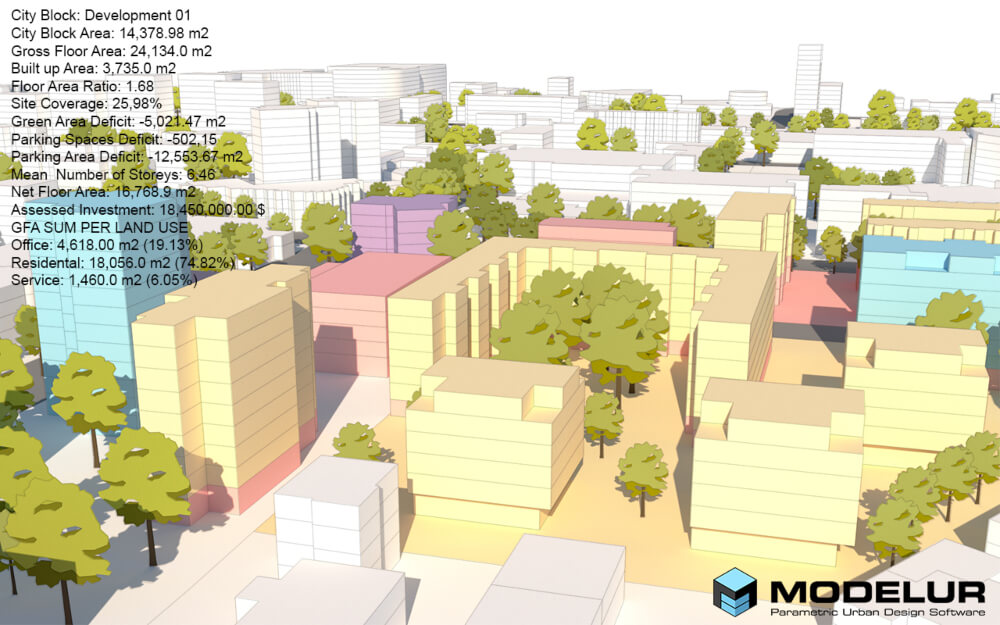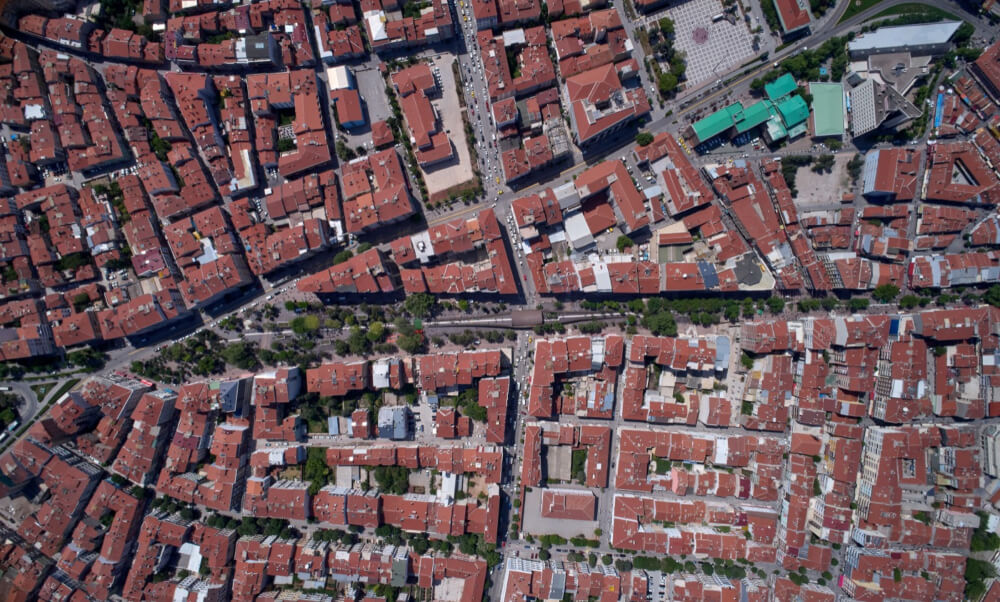1.) Floor Area Ratio
Floor Area Ratio (FAR), in some countries also known as Floor Space Index (FSI) is the ratio between the sum of floor area and the size of the development plot. We can calculate it by simply dividing the total Gross Floor Area (GFA) of all buildings and the Plot Area. GFA includes private units and common areas and is assembled from the floor area, including the structure of the building. FAR is a number that is always positive, 0 means there are no buildings on plot.
FAR is key parameter that regulates density of the city. It is important in order to control the bulk of buildings and intensity of surrounding activities.
There is no good or bad FAR because the final design solution depends on different factors, such as the density of surrounding development, urban growth patterns, population dynamics, mix of uses, etc. Floor Area Ratio is among the most commonly used instruments of regulation by municipalities. It sets maximum or minimum development potential of a certain plot or area.
2.) Site coverage

Site Coverage tells us how much of the parcel or development area is built. We can calculate Site coverage by dividing Built-up Areas (building footprins) of all buildings of the plot with Plot Area. The result is relative number from 0 to 100%. For example, 20% Site Coverage would tell us that 20% of the site is covered by buildings.
Site coverage is used to make sure there is enough space for other areas, besides buildings on site, such as Green Areas. Usually, in the regulation process, the municipality declares that a particular plot can only cover up to n% with buildings and n% has to be green areas, etc.
3.) Green Area Ratio
Green areas are an important part of new developments. Quality, sustainable and livable cities can only be achieved if there are enough green areas, based on density, number of inhabitants, apartments and more.
The Green Area Ratio tells us what % of the plot should be green. It is calculated by dividing the Floor Area of the plot or parcel with the green areas. Green Area Ratio is different, depending on city regulations and land use of a certain area, as well as density. This ratio prevents serves as a guidance for a balanced ratio between build and non-build environment. It is a way for the city to make sure new developments work well for all citizens, even those with lower income.
—
About AgiliCity
AgiliCity is EU based startup developing urban design software Modelur that helps urban designers work more efficiently. More than 60 customers like Gensler, Atkins and CallisonRTKL rely on our technology to reduce costs, maximize development potentials and deliver their projects faster. AgiliCity is a proud member of Arcadis City of 2030 Accelerator, powered by Techstars.



4 Responses
Hi, I am Carlos Lüchau. I’ve been checking your website and you content is really good. I have my own company but I am currently studying a master in TU Delft and I would like to try your software for a course that I will start.
Regarding this article, I have a doubt on the point 2. Site coverage, with the sentence “We can calculate it by dividing GFA of all buildings on the plot, including its structure, with GFA of the whole plot”. When you say the GFA of all buildings, do you mean the ground floor area instead of the gross floor area? In this way you can check how much site is not covered in the ground floor.
Keep with the great work and articles.
I look forward to you comments.
Best regards,
Carlos
Hi Carlos, you are completely correct! The right definition of site coverage is sum of built-up areas of all buildings on plot divided by plot area. We actually corrected it before it was published, but it looks like wrong version was still kept cached…
Great to have readers like you to warn us about such mistakes, thank you very much!
I really like your write up, please how do I get the software?
Hello Amadi. You can try our software by signing up for a free trial here: https://modelur.eu/trial-registration/. If you are a student you can also apply for a free student version. You can find installation instructions on our youtube channel here: https://www.youtube.com/watch?v=87MWyF5Wkm0